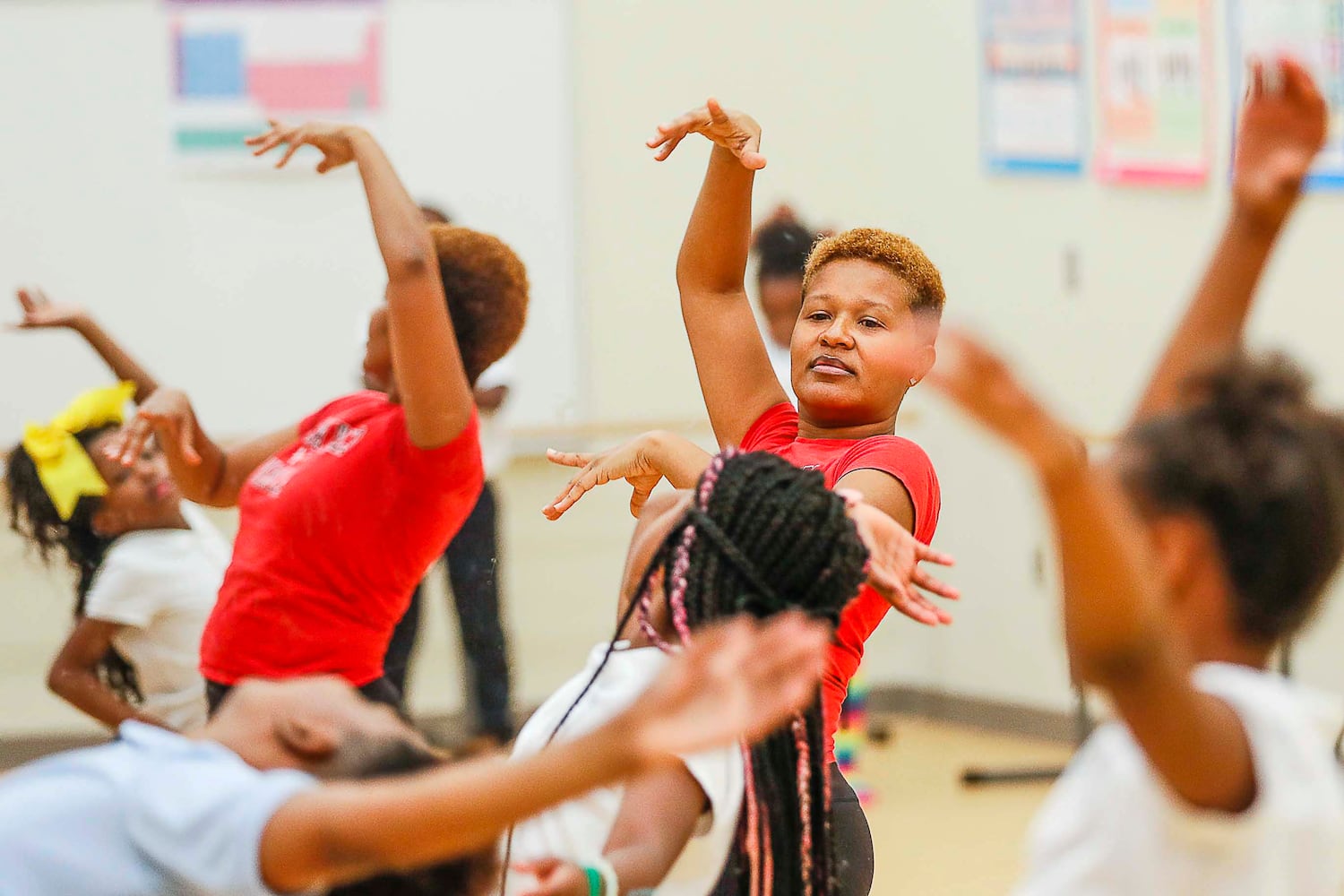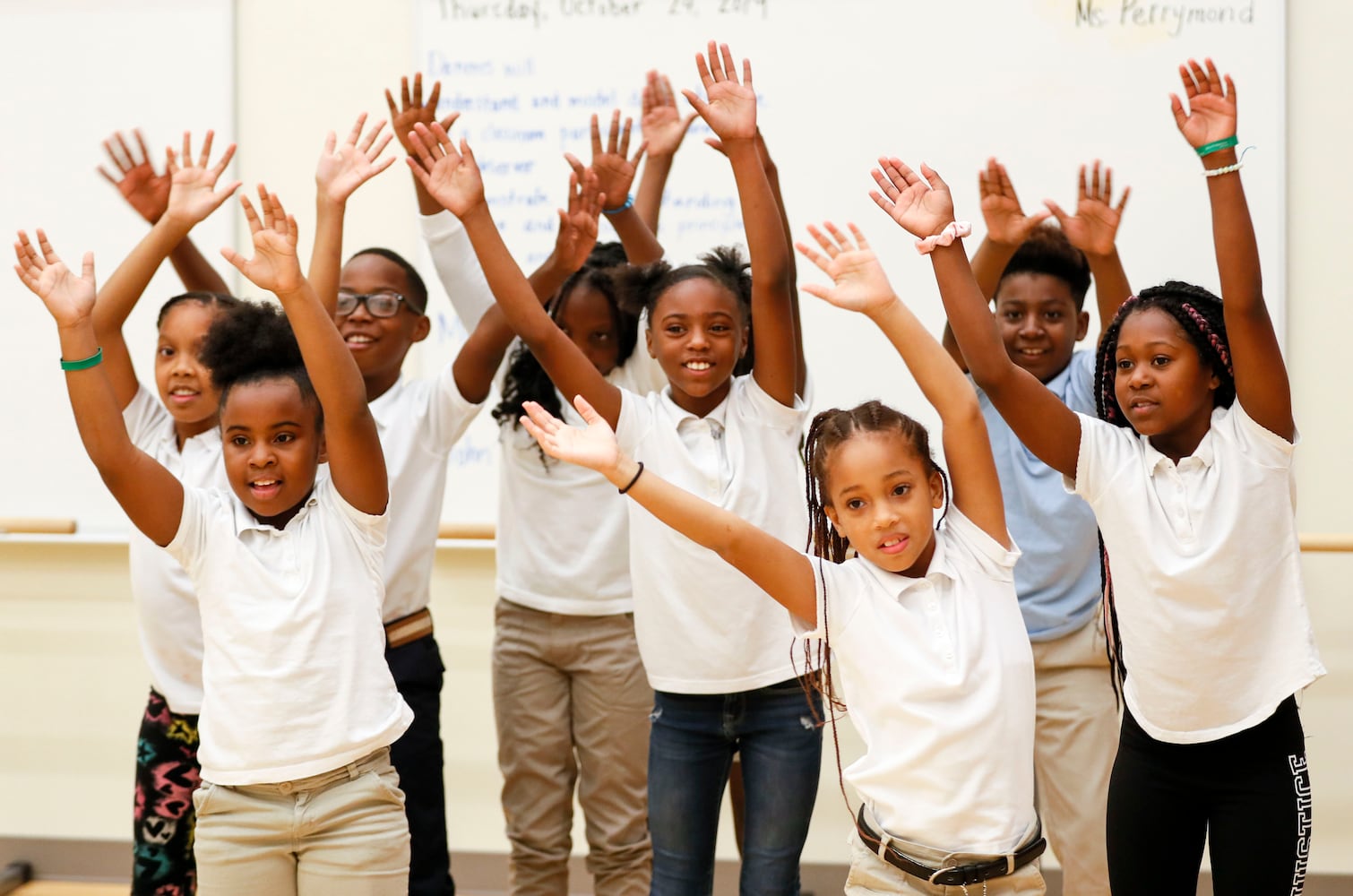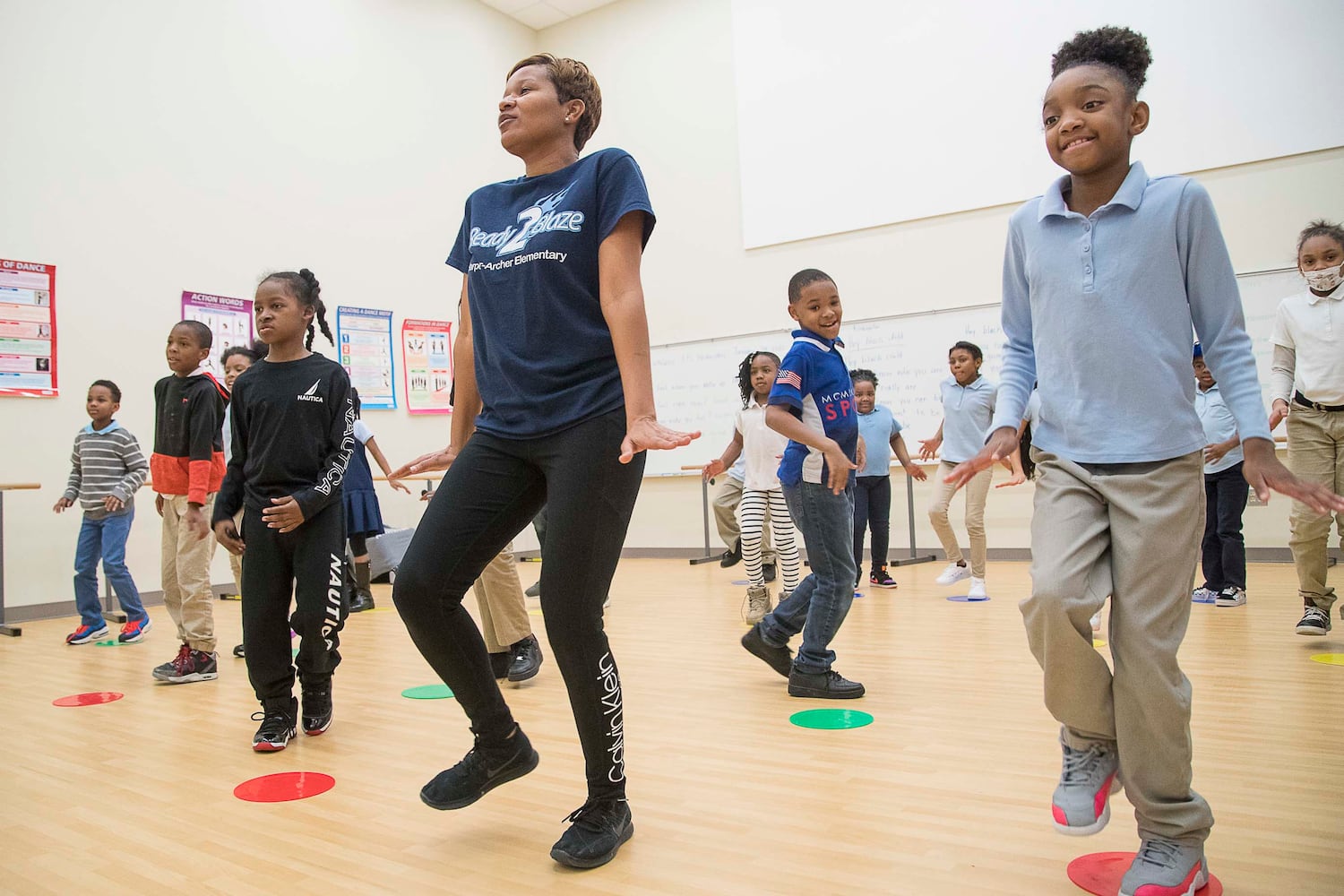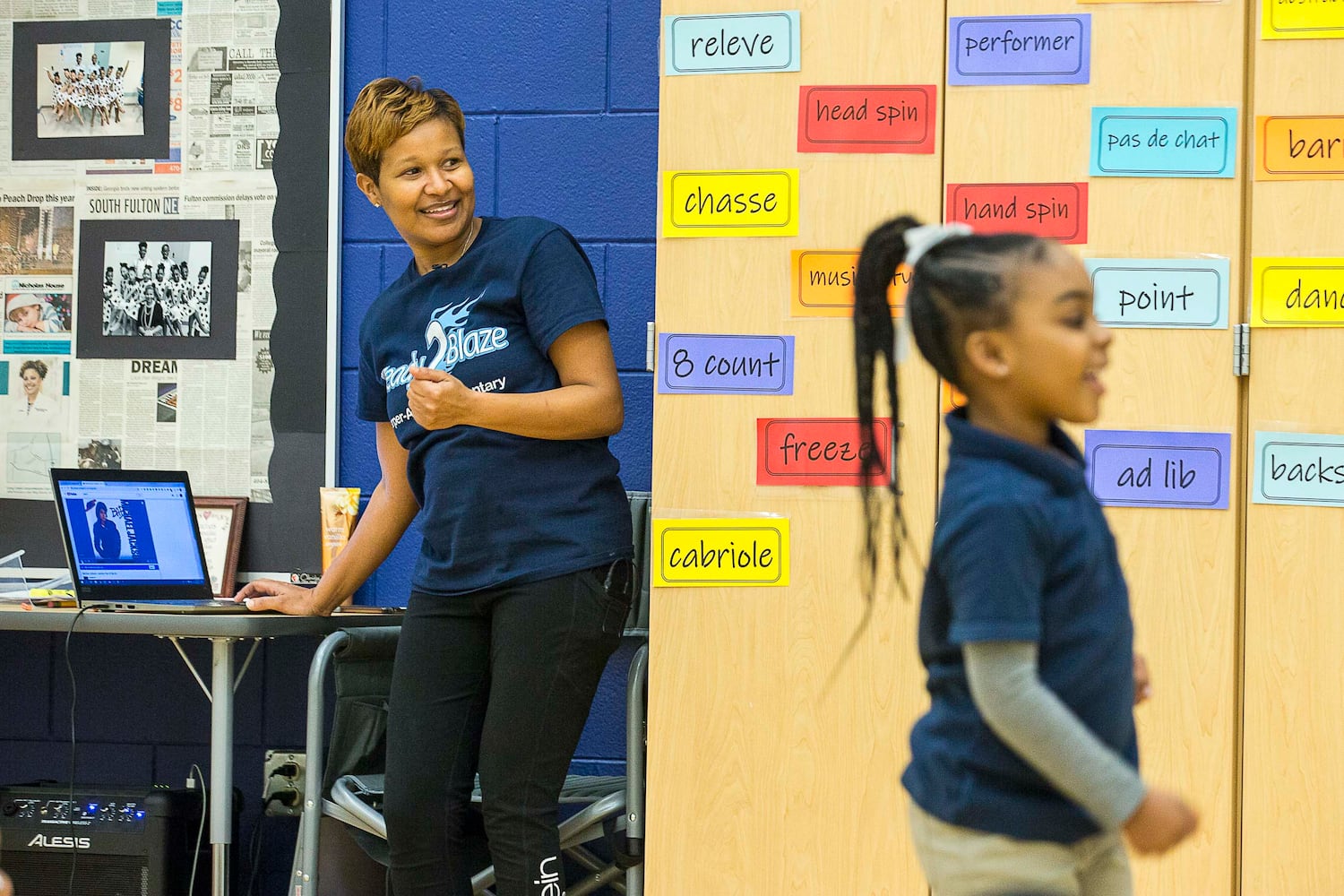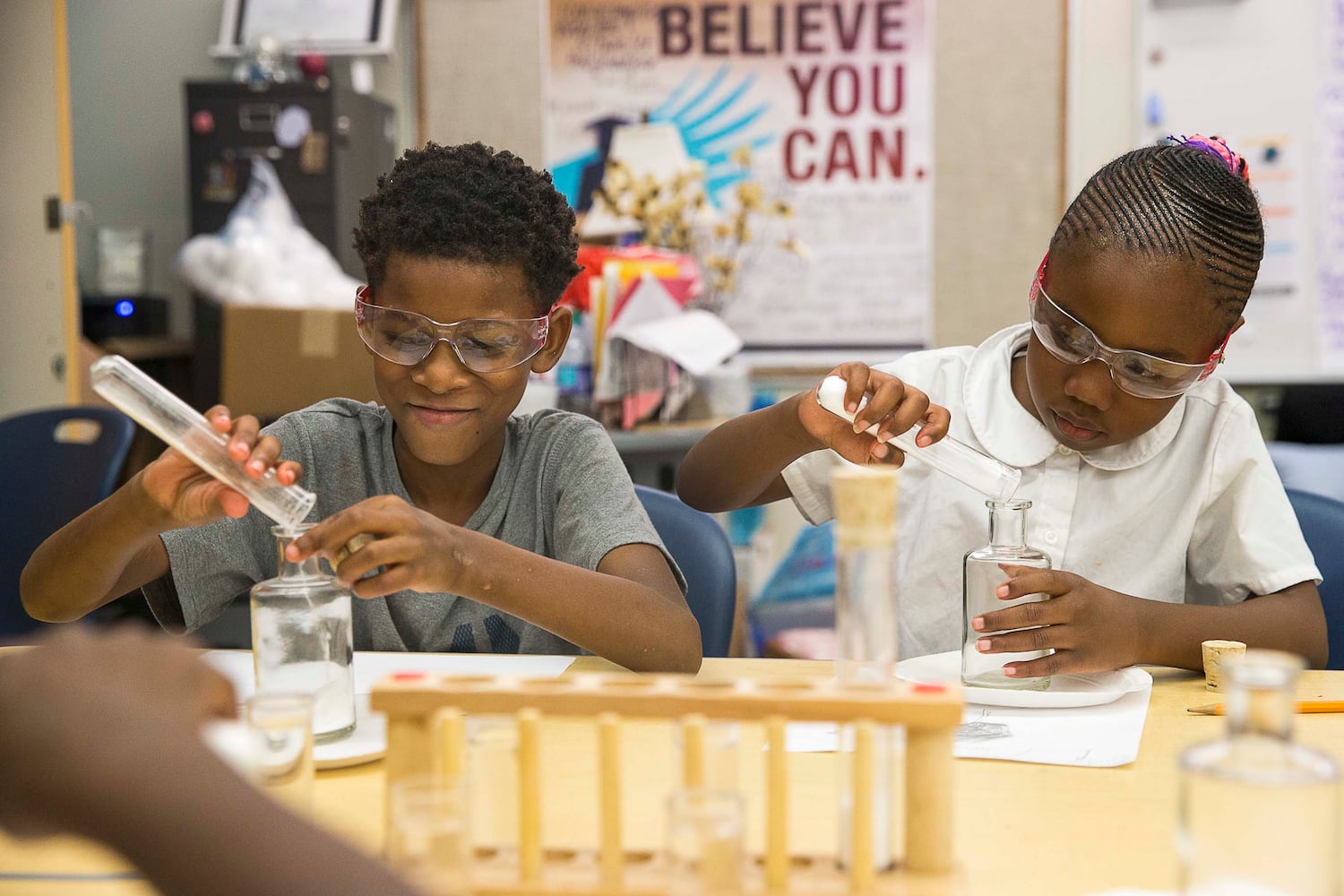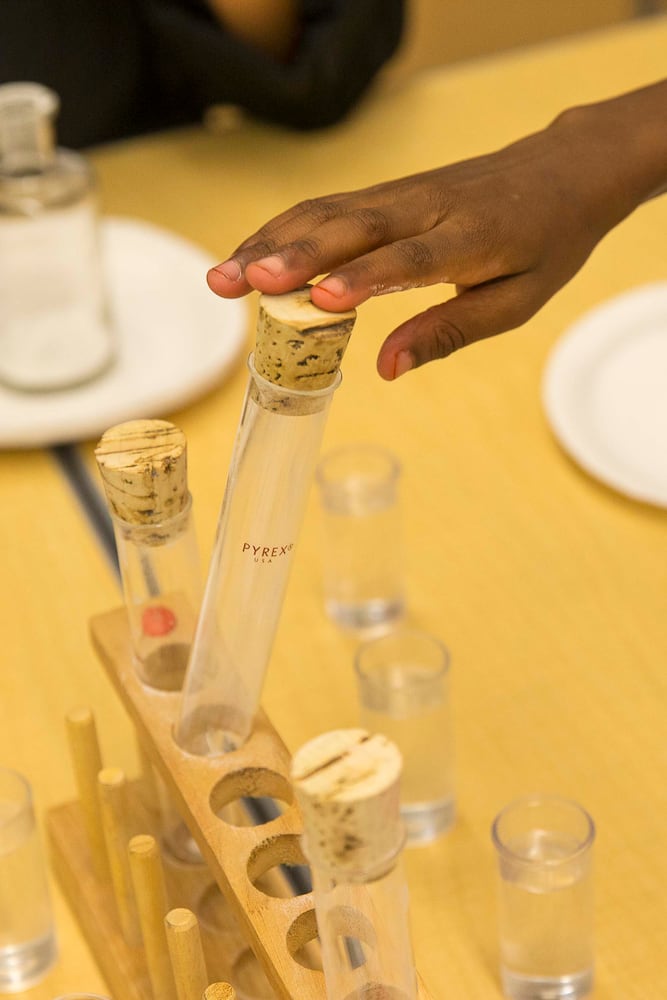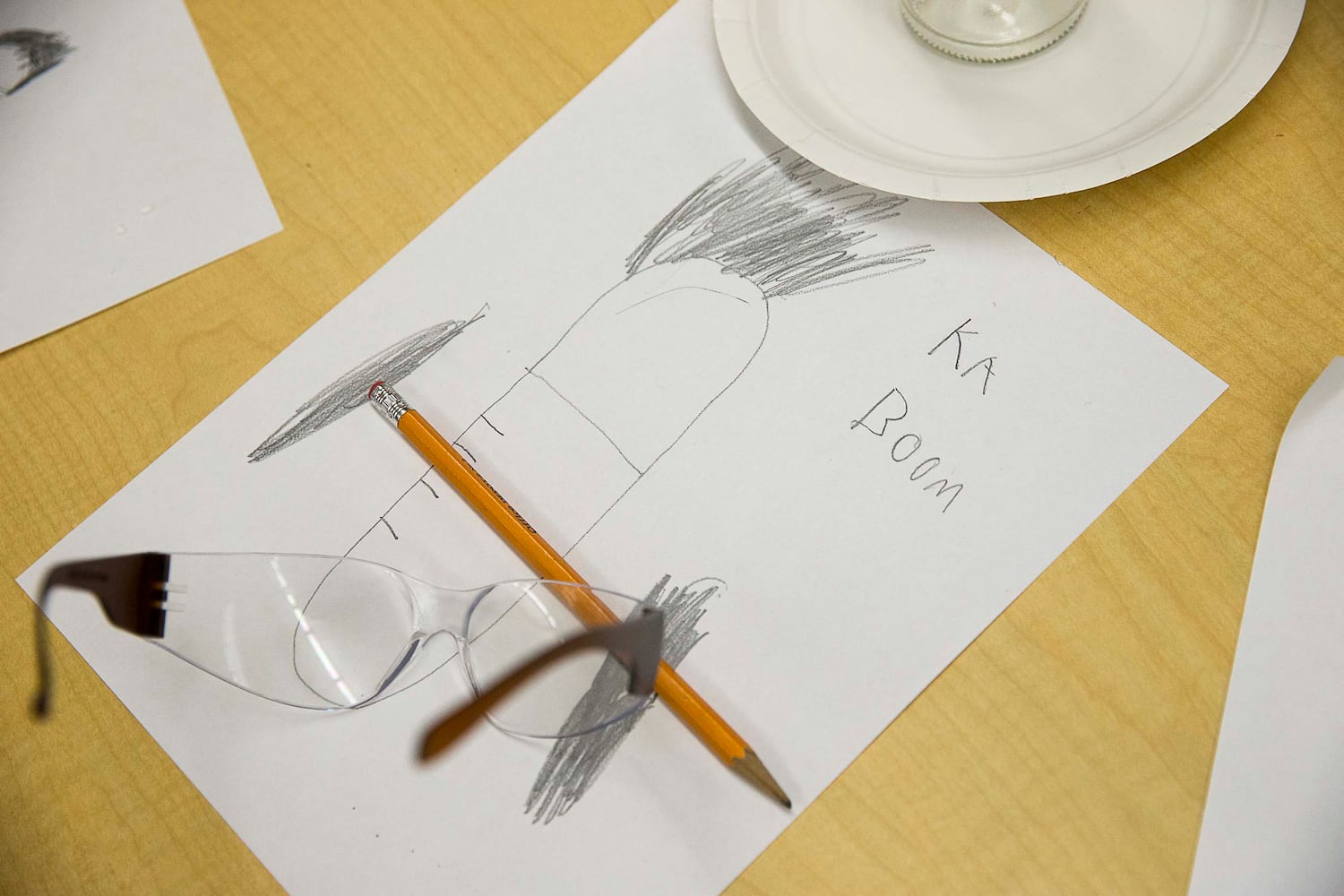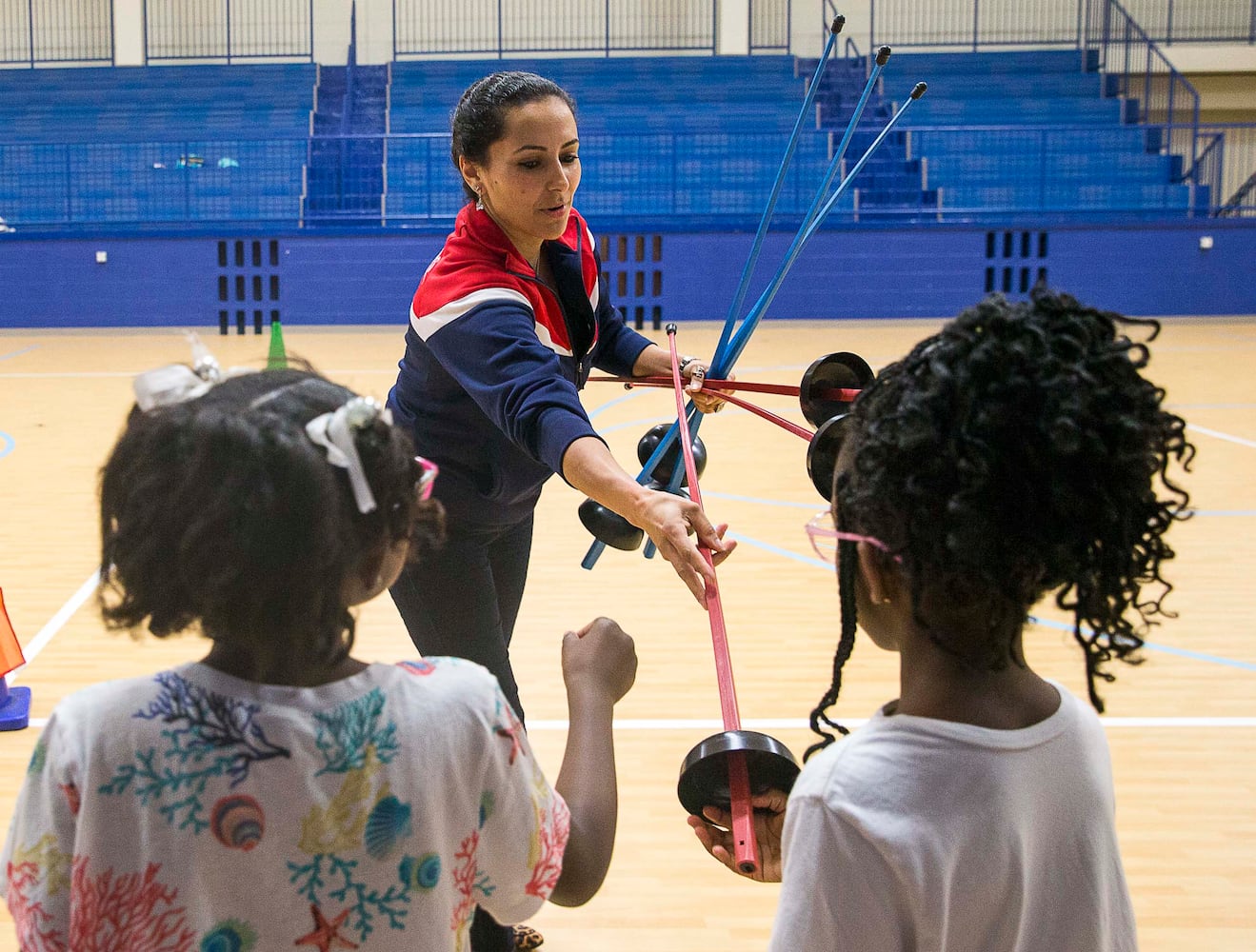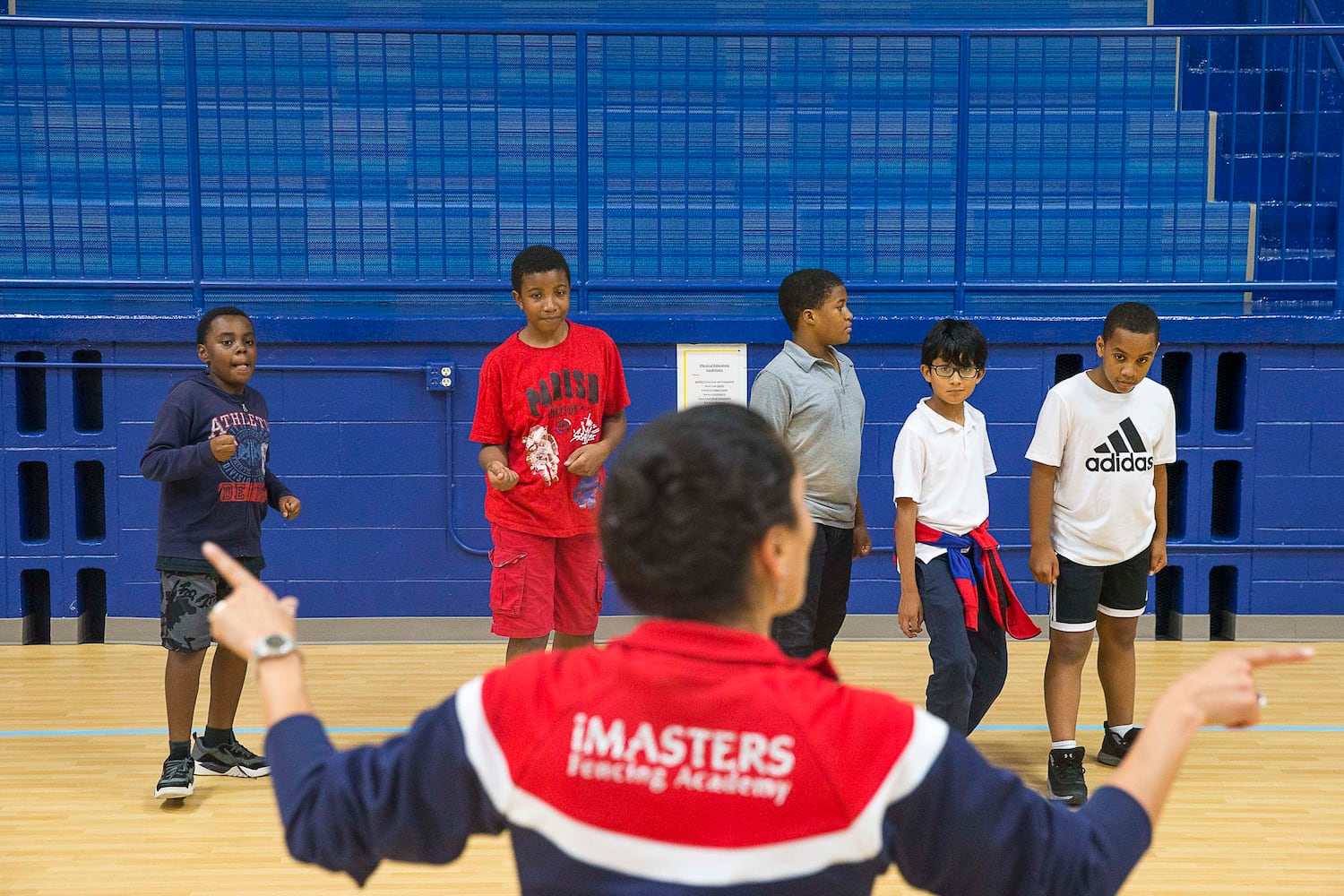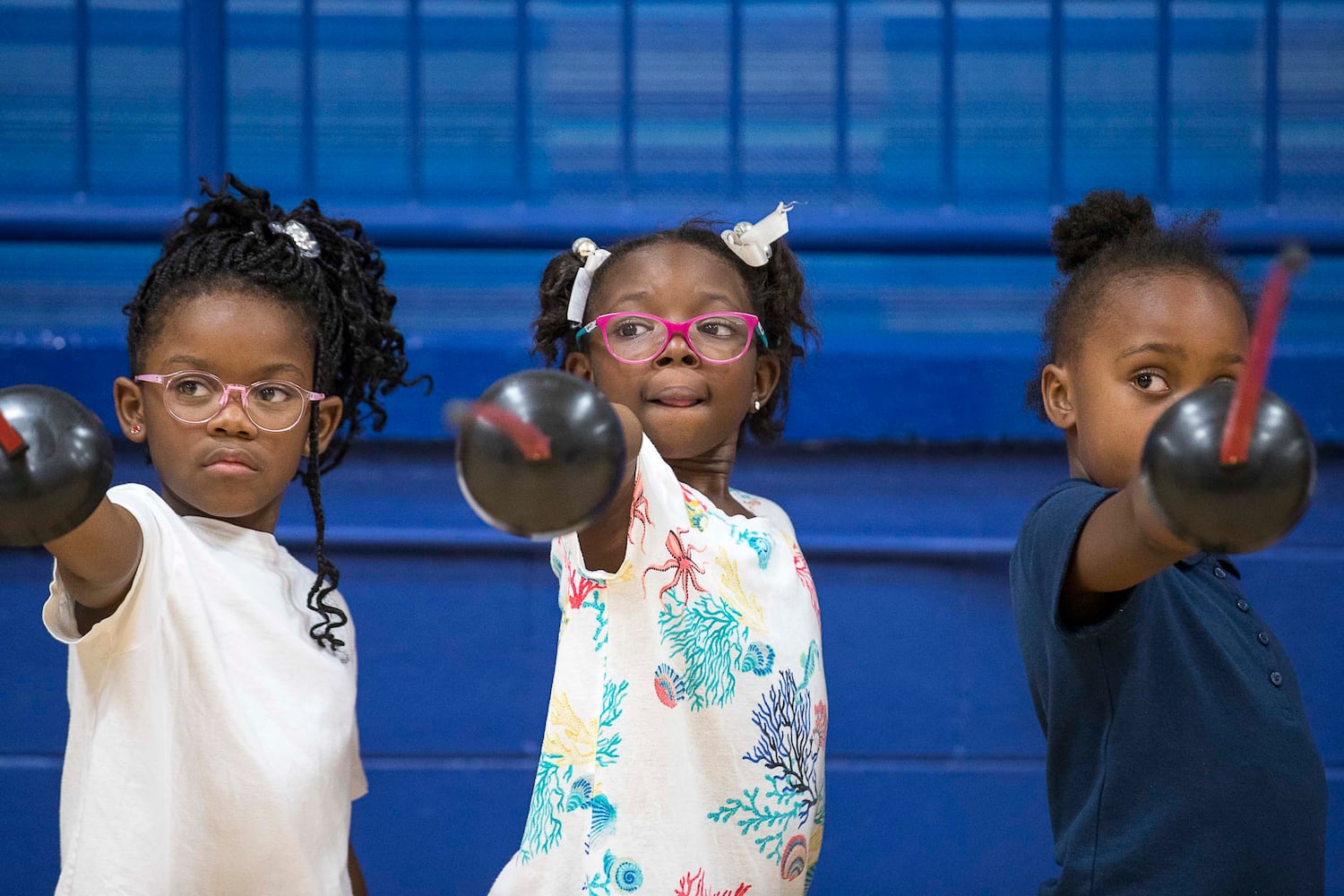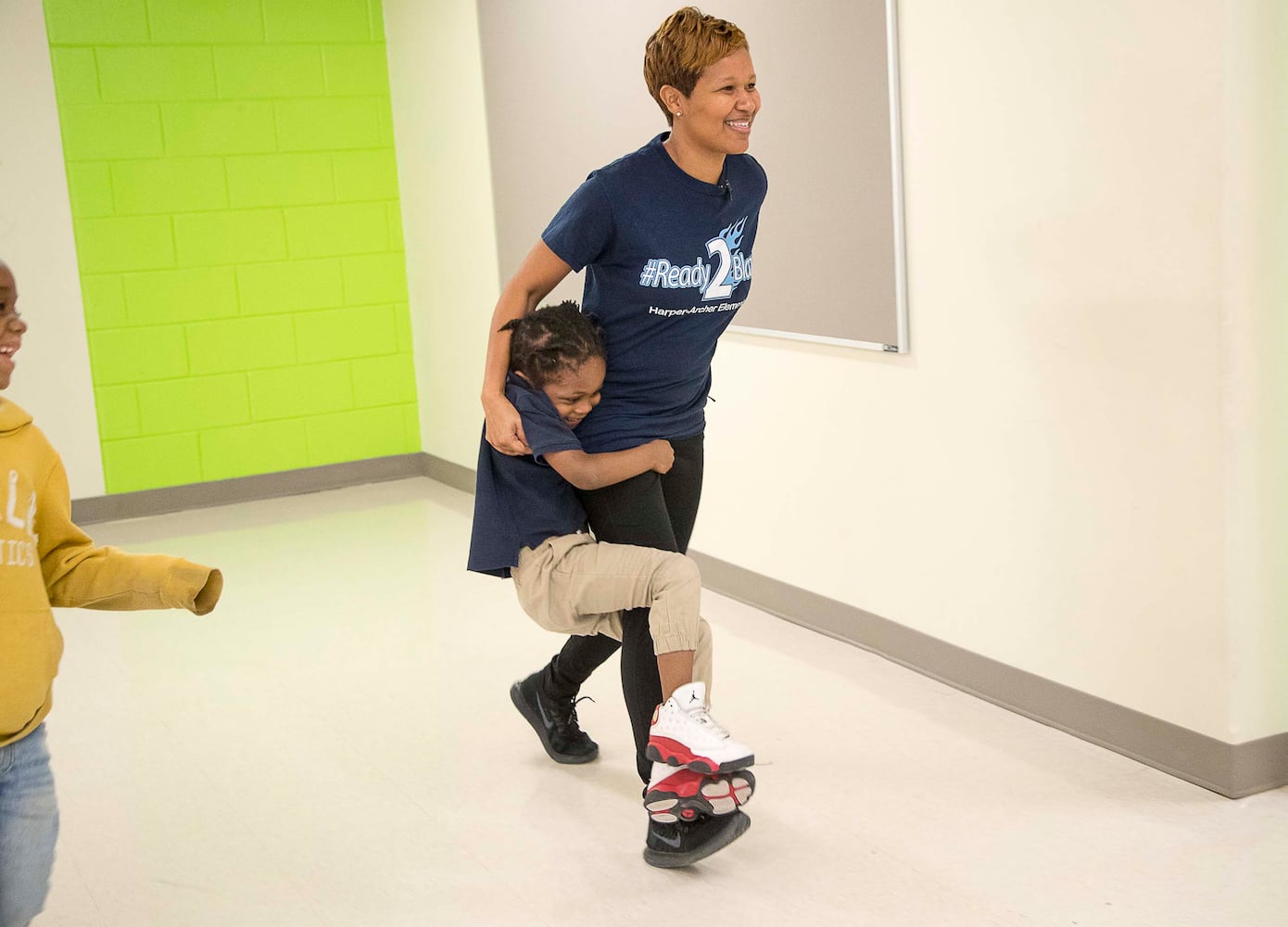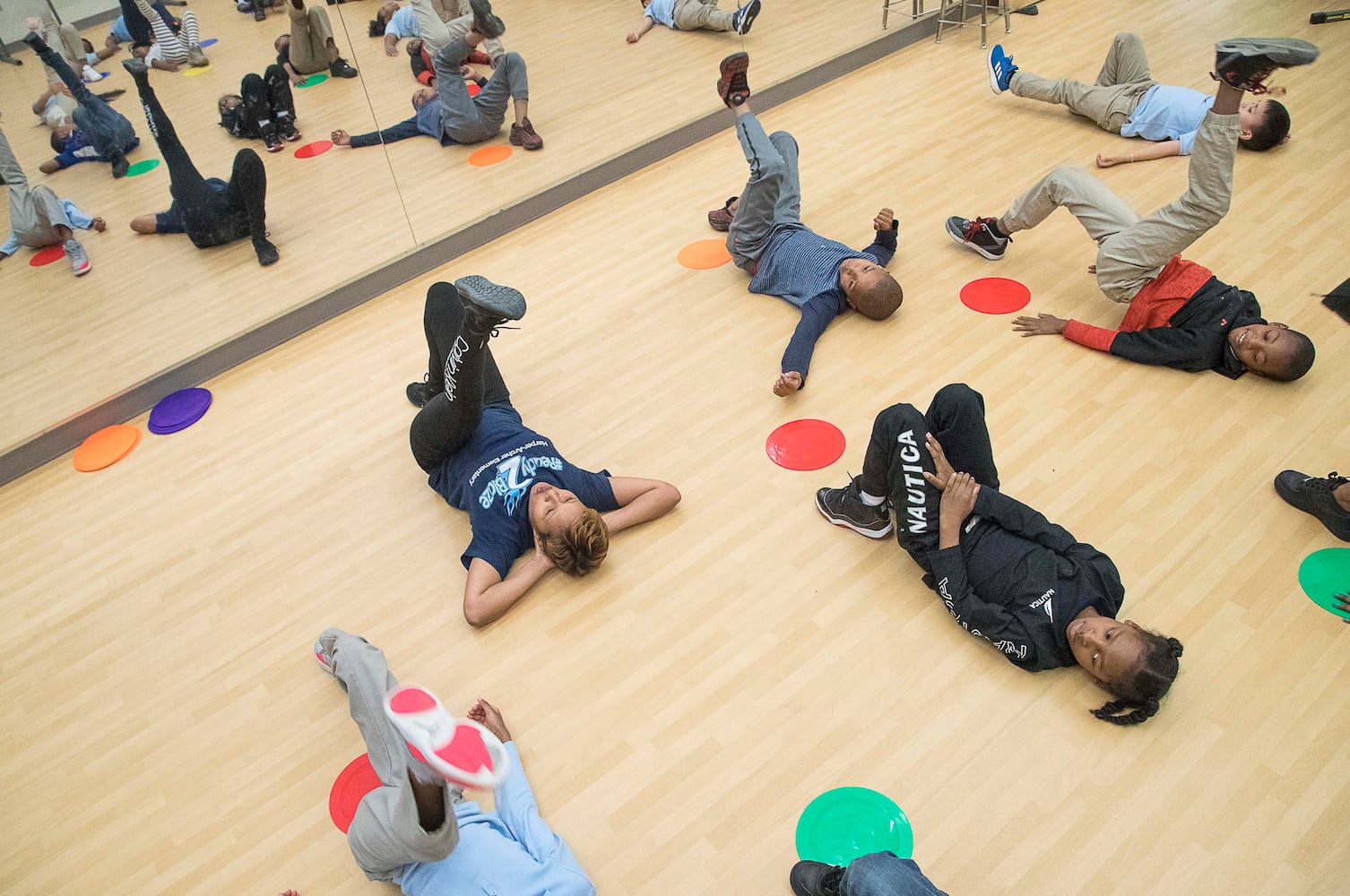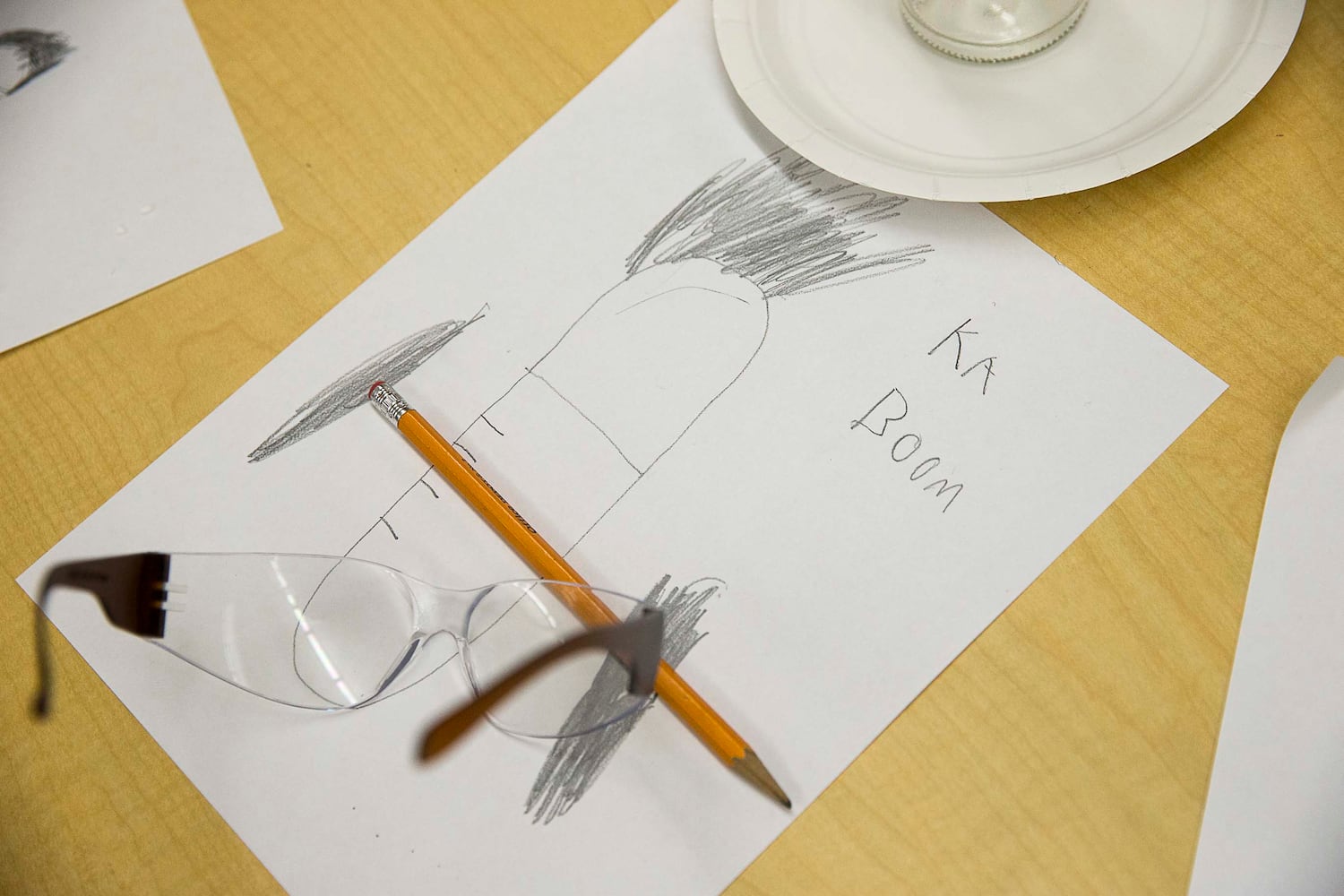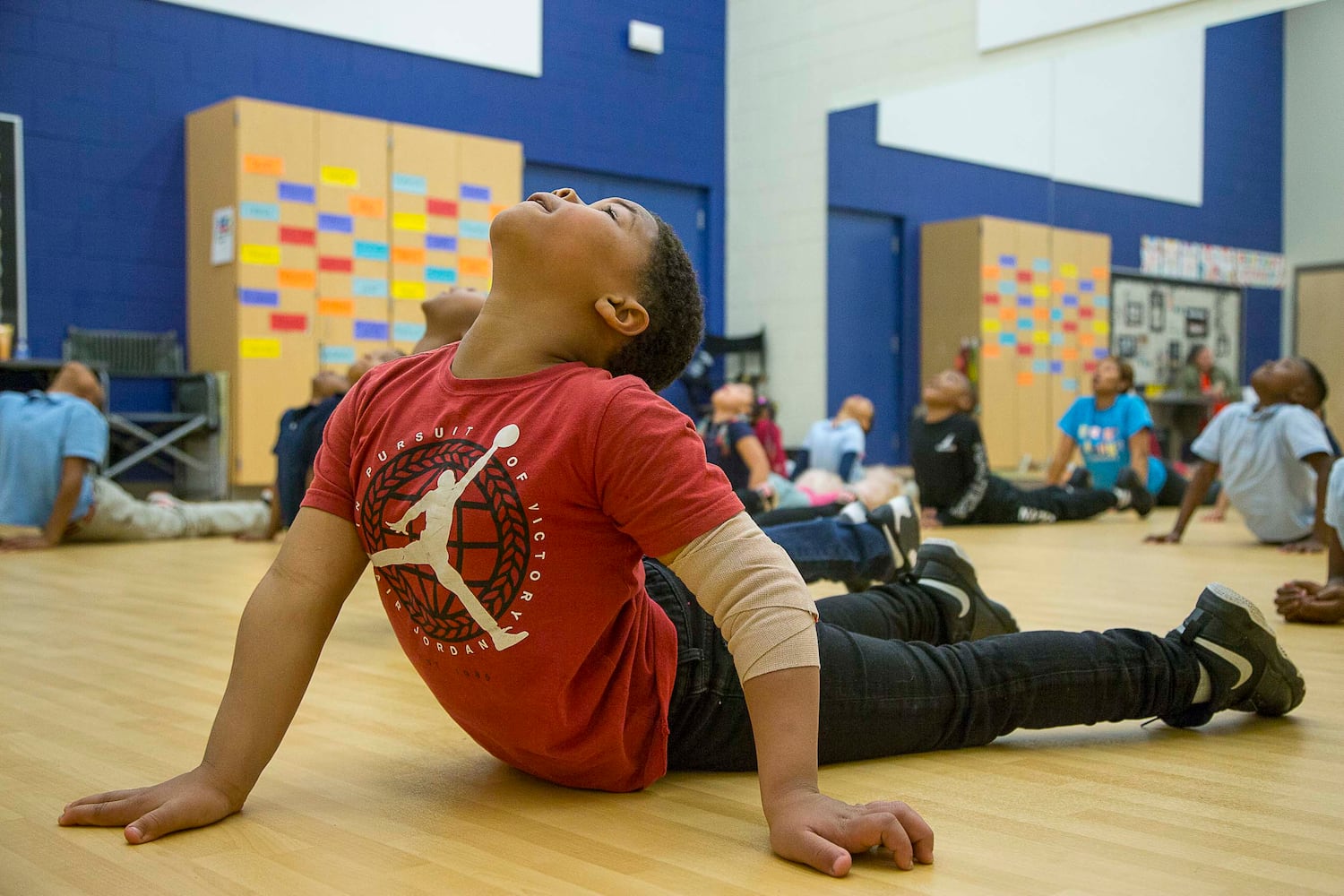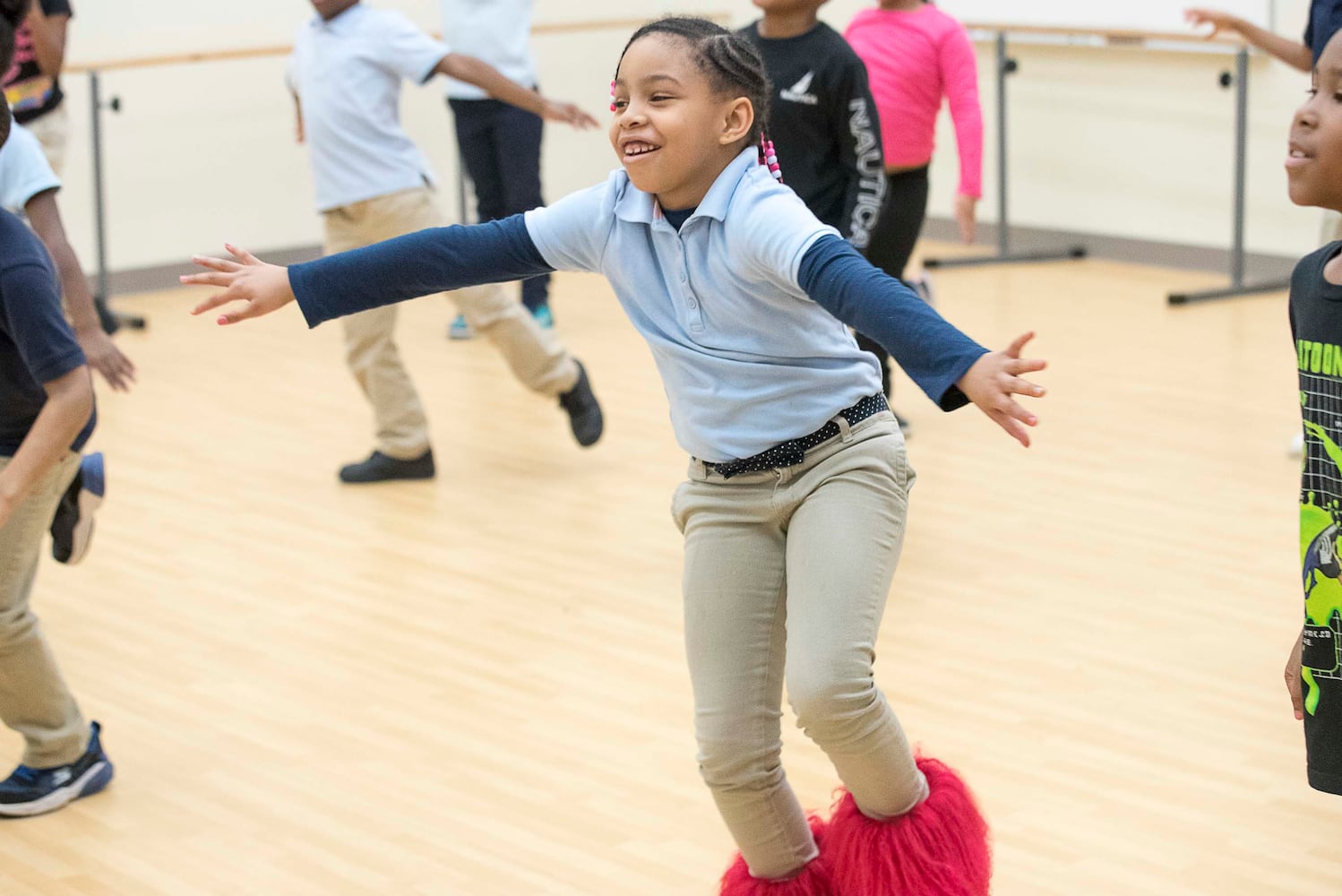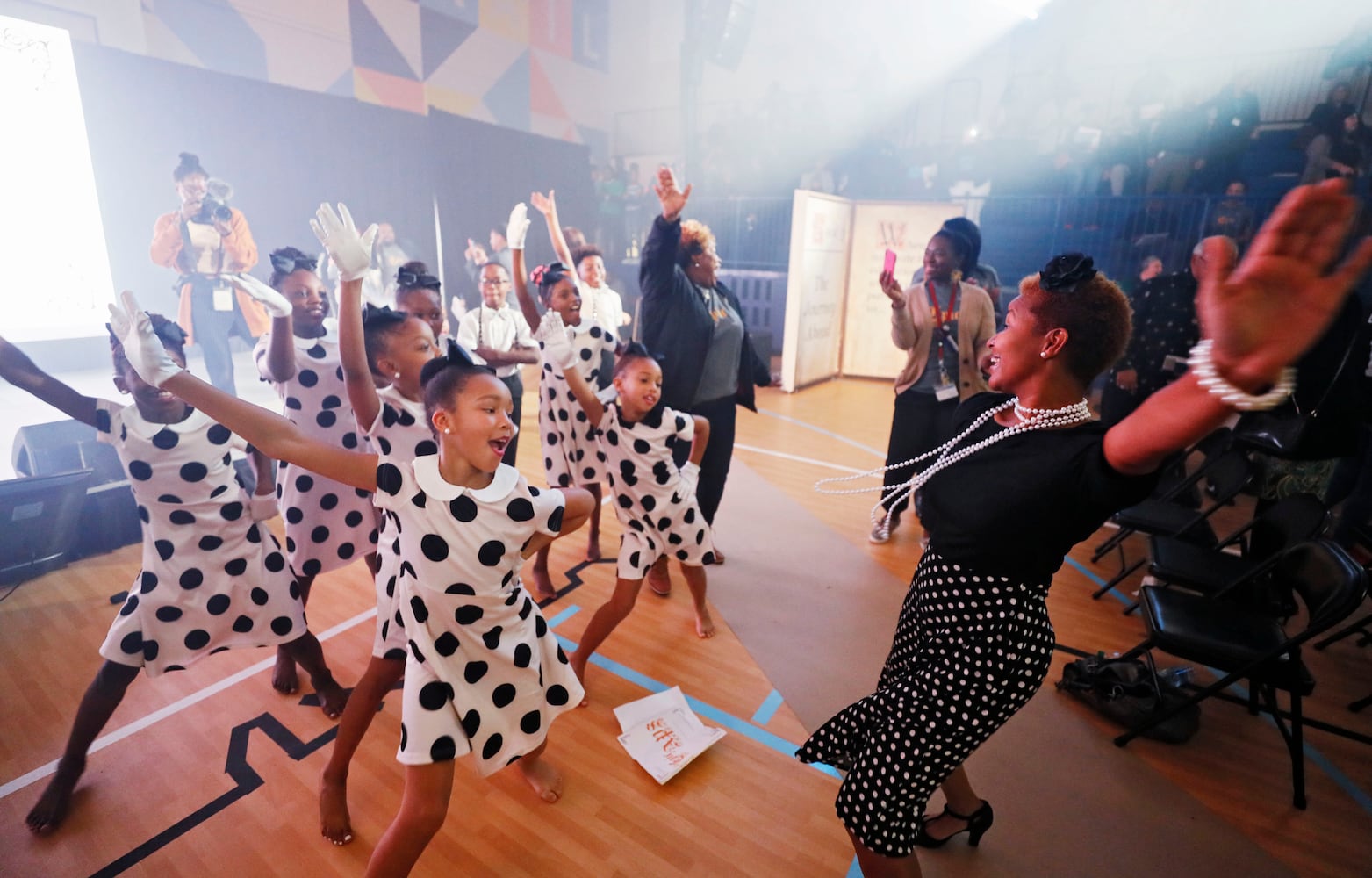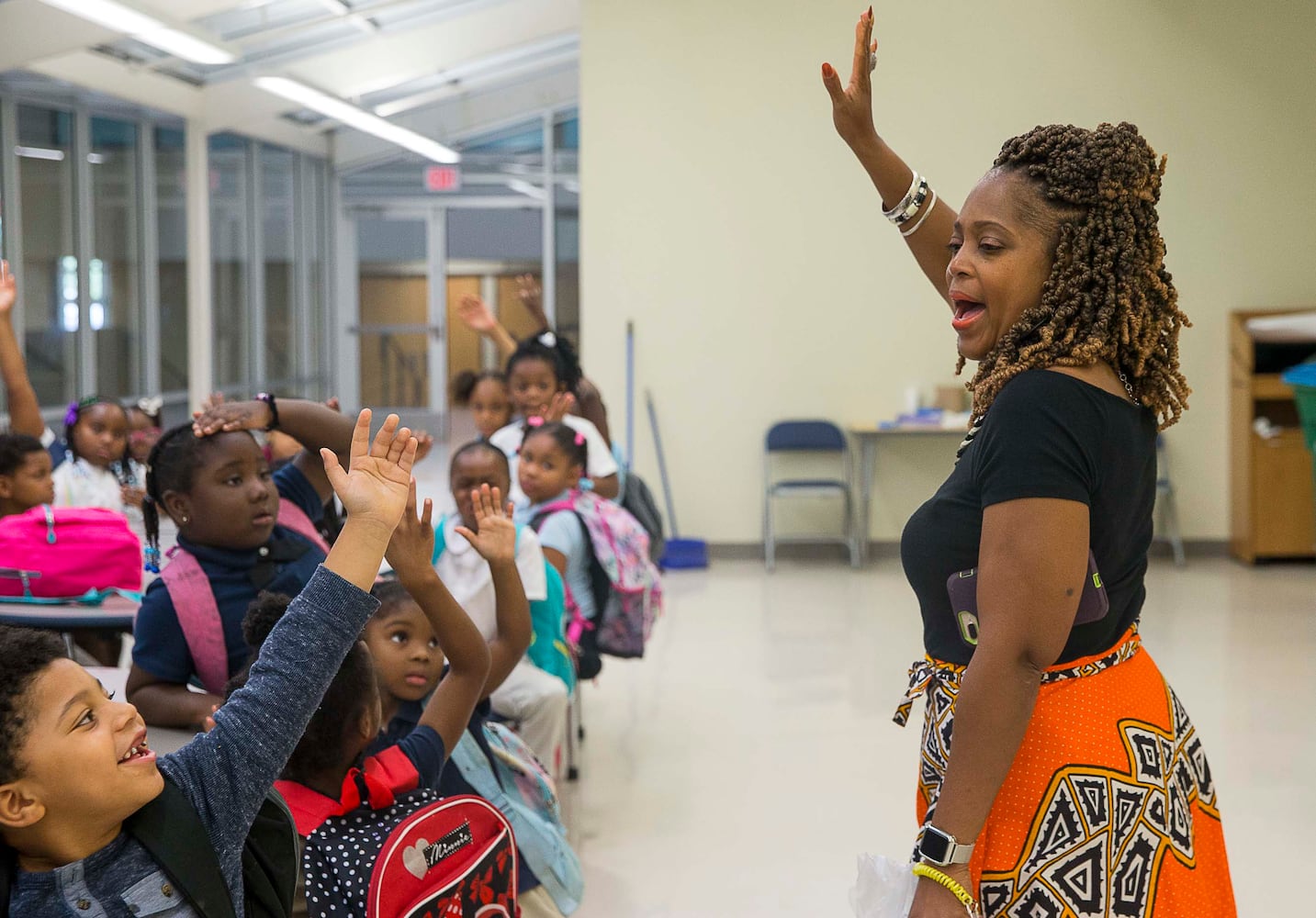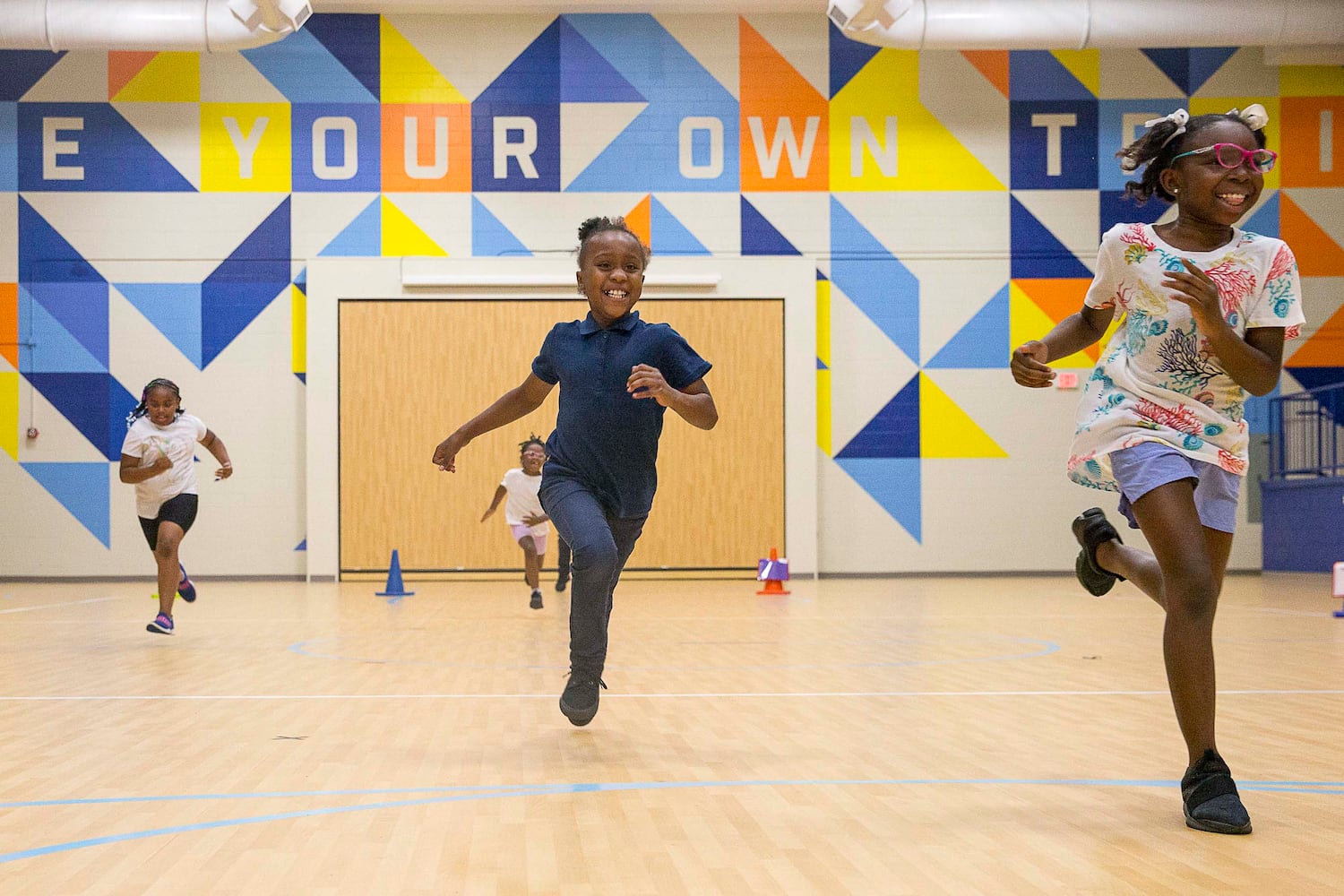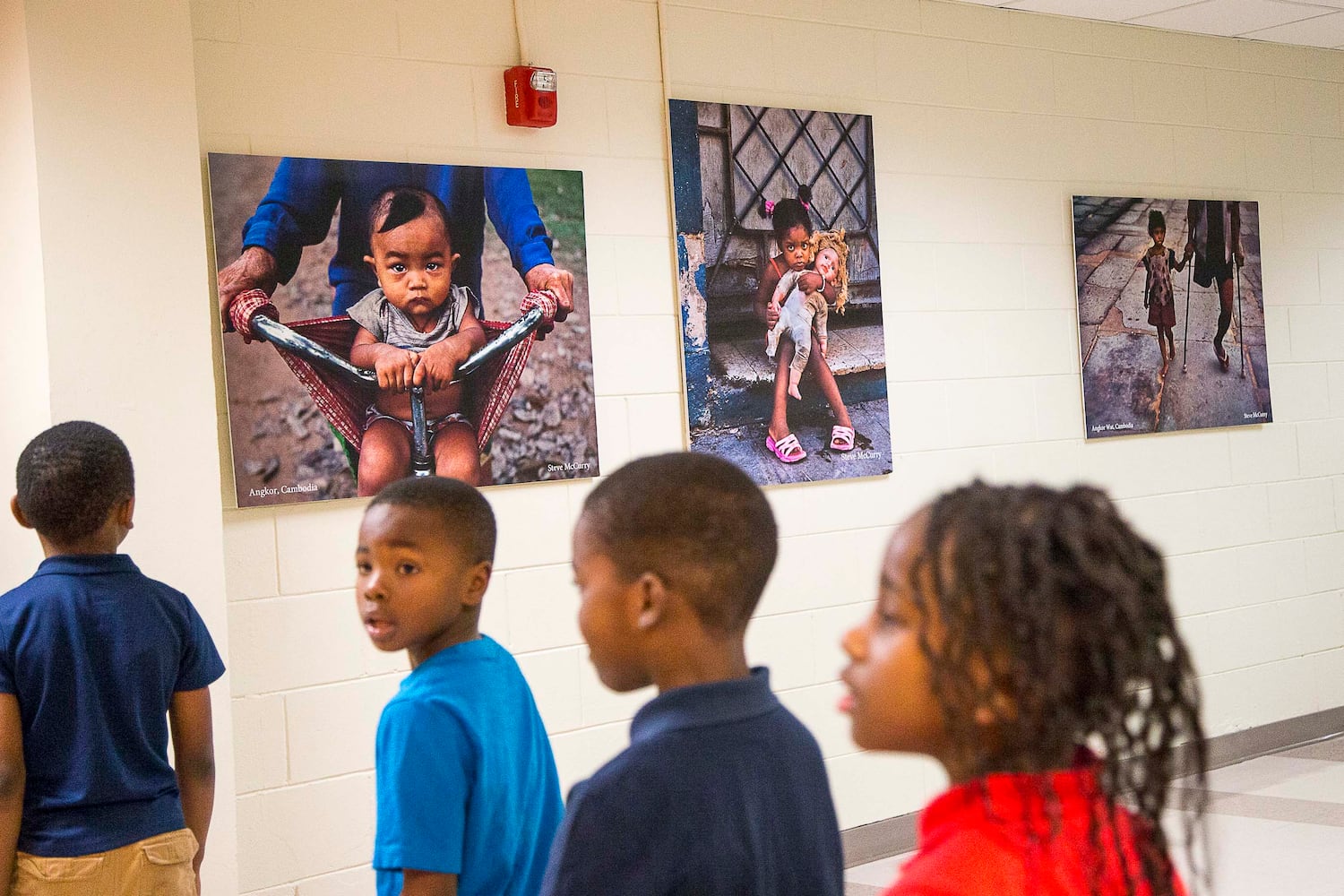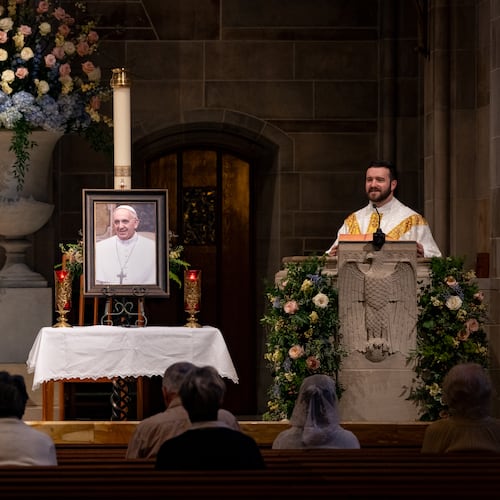By the end of the dance rehearsal, Lisa Perrymond was in tears. So was her boss.
Harper-Archer Elementary School Principal Dione Simon Taylor had just watched the former first-grade teacher count the beat as kids twirled across the studio.
VIDEO: ‘You can always dance it out’
Taylor fought hard for this wood-floored, mirror-walled space. She begged officials to include it in the building’s $11.6 million renovation.
“You gotta get this for my kids,” she had said.
Her school opened in August. It’s the only elementary in Atlanta Public Schools with a dance studio.
Credit: Alyssa Pointer
Credit: Alyssa Pointer
A robust arts program— with music, visual arts, drama and dance — is part of Taylor’s vision of a well-rounded education. In this turnaround school, where students lag in reading and math, weaving the arts into the curriculum would be a key strategy, not a luxury.
Students who’d never taken a dance class would discover ballet and study opera and play the drums loudly as their music teacher called out each quarter note above the happy din.
Such opportunities can boost academics and attendance and reduce disciplinary problems, some experts have found. The experiences are especially valuable for low-income students.
The arts would get kids excited to come to school and pull parents in, too.
But shortly after the school year started, the dance teacher resigned. An empty studio would mean an opportunity unfulfilled.
Perrymond, 43, energetic and cheerful, is a lifelong dancer. She studied jazz, ballet and African dance, though she'd never taught it. Since graduating from Clark Atlanta University, she has worked as an elementary school teacher and focused her master's degree on reading and literacy.
Taylor hired her to teach first grade at Harper-Archer, and ever since, Perrymond had joked that if she went missing from her classroom they’d find her in the dance studio. She was shocked when the principal asked her to step in as dance teacher. She asked, “Are you for real? Don’t play.”
Credit: Bob Andres
Credit: Bob Andres
Two weeks later, near the end of October, Taylor stopped by the studio to check in.
Not only was Perrymond new to teaching dance, but in 14 days her students were scheduled to perform on APS’ biggest stage. Superintendent Meria Carstarphen had chosen Harper-Archer as the site of her final State of the District address, an annual event that has grown into a high-profile media showcase.
The novice dance teacher rehearsed with her students while her boss beamed. Afterward, Taylor turned to face the corner, away from the studio mirror that multiplied all those little dancers and their big dreams. She cried, collected herself and hugged Perrymond.
Eyes brimmed with tears, hearts with pride.
“She’s just so happy doing what she loves to do,” the principal said. “She loves to teach, but she also loves to dance.”
Credit: Bob Andres
Credit: Bob Andres
Arts, academics blend
Harper-Archer aims to infuse academics with the arts.
More than 200 large color photographs provided by the Besharat Arts Foundation Museum & Gallery hang in the hallways. In classrooms, teachers blend the arts with core subjects.
Harper-Archer’s embrace of the arts-integration model made it a pioneer among district schools, according to Sara Womack, the APS fine and performing arts coordinator. She believes in the approach because children come to school for athletics and the arts.
“It hooks them in and engages them into the school culture,” Womack said.
Children want to create, said Taylor. She thinks the focus also will bring families into the school to see what their kids are up to.
A volunteer group of teachers are receiving specialized training on how to use the arts to explain and expand upon other academic subjects and make learning fun. Other teachers are encouraged to try small steps. It can be as simple as having first graders draw a picture to illustrate a sentence they wrote or playing a song that helps older students learn historical facts.
In addition to offering dance, chorus, music and band, the school partnered with Atlanta arts organizations such as Alliance Theatre, the Atlanta Opera and the dance program Moving in the Spirit. Experts come into the school to lead multiweek residencies.
Researchers have found that disciplinary infractions go down and writing test scores go up when schools increase arts learning, according to a 2019 study of Houston schools. Those involved in arts programs are also more likely to graduate, Womack said.
Credit: Alyssa Pointer
Credit: Alyssa Pointer
Affluent families can pay to give their children after-school dance lessons or send them to music camp. For lower-income students, school may be the only place where they get those experiences.
“I just want them to have the same opportunities as everyone else’s kids, regardless of where they live or what their background is,” said Perrymond, whose grandmother dragged her down the street to her first dance class at Harlem School of the Arts during one formative summer growing up in New York City.
“I know that other children are going to do well regardless, because they have back-up. They have support systems. They have a lot of things that our kids don’t have,” she said.
She has spent most of her career in APS, but left for a couple of years to teach in Abu Dhabi. When she moved back last spring, she heard about the new school.
“I just want to make a difference,” Perrymond said. “This was the best place that I could do that.”
Improving students’ reading and math skills is a huge and necessary focus at Harper-Archer. Many children struggle in the core subjects they need to master to be successful in school.
Dance offers freedom, Perrymond said. There are no wrong answers in the studio.
“When they come in here … I don’t know what level they are on. I don’t know if they’re the best reader. I don’t know if they don’t like science,” she said. “All I know is, ‘Here’s a free space for you to dance. Here’s a free space for you to express yourself.’ ”
Credit: Alyssa Pointer
Credit: Alyssa Pointer
‘Always dance it out’
On a Thursday in late January, Perrymond began a second-grade dance class with a simple question: How do you feel?
Eager hands shot up. “Excited,” said a child. “Happy” and “sleepy” others chimed in. When one little girl said “ignored,” her teacher wanted to know more.
“You feel like you’re not getting enough attention from people?” Perrymond asked. “What would you like to happen today? How can we change that?”
“Dance,” replied the girl.
Half an hour later, after the kids had stretched and lunged and learned new steps, Perrymond asked if anyone’s mood had changed. The girl who had felt ignored said she now felt “pumped.”
Perrymond tries to use her class to help children who may not have the social and emotional skills to express themselves. Many students seek her out. When they pop by the studio to say hello, she greets them with a “hi, boo” and a hug.
“Sometimes children can’t write what they’re feeling, sometimes they can’t speak what they’re feeling,” she said. “But you can always dance it out.”
Credit: Alyssa Pointer
Credit: Alyssa Pointer
Her love for dance runs deep.
As captain of Clark Atlanta’s Essence dance team, she performed alongside the Mighty Marching Panthers band. She danced in the 1996 Olympics opening ceremonies in Atlanta and has traveled overseas to dance. She considers becoming a dance teacher the “biggest break of them all.”
Credit: Alyssa Pointer
Credit: Alyssa Pointer
A few of her students seem to be falling in love, too.
Second-grader Kimora Parker said dancing makes her feel awesome, that it’s one of her favorite parts of school, that she loves learning new moves.
“I want to be a dancer when I grow up,” said Kimora, after a class that shook the fringe on her bright pink boots.
Back in November, the big performance arrived after weeks of rehearsal.
The Harper-Archer dancers stood fearlessly in front of hundreds as the State of the District drew to a close.
Perrymond crouched on the floor. Taylor clasped her hands to her face. The dancers lifted white-gloved hands, reaching high. Jumping, spinning.
Then … applause.
About the Author
Keep Reading
The Latest
Featured
